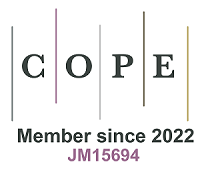Volume 6, Issue 1 (March, 2025) – 16 articles
In the ever-evolving landscape of cancer diagnostics, artificial intelligence (AI) is leading a revolution, turning liquid biopsy into a sharper, more precise tool. Like a rolling stone, traditional approaches struggle to keep up with the rapid pace of innovation. Now, AI-driven analysis of extracellular vesicles (EVs) content is rewriting the rules, offering a plausible, noninvasive way to detect, monitor, and predict breast cancer progression with unprecedented accuracy.
EVs cargo carries a wealth of molecular information, acting as small messengers. Interpreting their signals has long been a challenge. By integrating machine learning, researchers can decode these messages, potentially distinguishing cancer-specific biomarkers from the noise. This AI-powered approach is not just improving early detection but also paving the way for personalized treatments.
As the synergy between AI and EVs unfolds, the paradigm of cancer care is shifting. The old road of one-size-fits-all diagnostics is rapidly aging, and those who refuse to embrace AI’s potential will soon find themselves left behind. The times, they are AI-changing—offering hope, clarity, and a new frontier in the fight against cancer.










